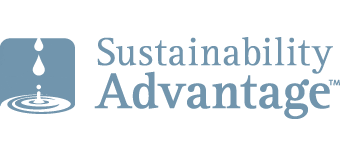7 Reasons That it’s Time for a Gold-Standard Benchmark

In my last blog, I outlined five benefits of a gold-standard ESG benchmark for sustainable companies. Ten years ago, it would have been too soon to develop this benchmark. Ten years from now, it may be too late. Here are at least 7 reasons that now is the right time to create a gold-standard benchmark for ESG performance.
1. Leading companies are ready
The business community has already started to set gold-standard ESG performance benchmark-like goals for their environmental initiatives. Wal-Mart, GM, Ford, Toyota, Unilever, PepsiCo, P&G, Kraft, DuPont, Kimberley Clark, and others have embarked on zero-waste initiatives. California has regulations that require all new commercial buildings to be zero-net-energy (ZNE) by 2030. Interface is using its “Mission Zero” to climb “Mount Sustainability” by 2020. These leading companies know that attaining these stretch goals will make them stronger, more resilient, and more successful. Aggressive “zero” or “100%” goals for KPIs in the gold-standard benchmark will not shock them. They already agree with them.
2. Important stakeholders are ready
Investors, consumers, employees, and other important stakeholders are holding corporations to higher and higher ESG standards. They expect companies to not only withstand global sustainability megaforces, they expect them to proactively address such issues and flourish as they capture associated opportunities.
3. Capitalism is ready
There is a growing understanding that the game of business as we have played it for the last 150 years cannot continue. Yesterday’s Capitalism 1.0 has been fun, but it is under siege because it is not sustainable. Today’s business model encourages companies to relentlessly deplete our natural capital and to use nature as a dump. Nature is resilient and self-regenerative, but there is an ecological tipping point beyond which it cannot recover from this abuse. The same is true for society. The widening gap between the haves and have-nots is unhealthy, dangerous, and unsustainable. The characteristics of a Capitalism 2.0 company mirror the characteristics of truly sustainable business. A company that aspires to gold-standard performance on its ESG criteria will be well-positioned to flourish in a Capitalism 2.0 world.
4. The business case is stronger than ever
The business case for sustainability strategies shows that companies using today’s ESG best practices are more successful. The New Sustainability Advantage describes the compelling business case for sustainability strategies. It shows that if a typical company were simply to use best-practice sustainability strategies and programs already being used by real, leading sustainability companies, it could improve its profit by at least 51 percent to 81 percent within three to five years, while avoiding a potential 16 percent to 36 percent erosion of profits if it did nothing. The company will earn more revenue, save expenses, avoid risks, and enhance its brand. Smart ESG-related strategies offer a sustainability advantage, not a sustainability sacrifice, both in the short term and the long term.
If just doing more on ESG increases profit that much, imagine how a gold-standard level of performance on ESG factors would strengthen the income statement and balance sheet when the company goes the whole distance.
5. Opportunity to harmonize with other ESG standards
Several ESG standards are being launched between 2013 and 2015. It would be great if they were harmonized. A gold-standard ESG performance benchmark promotes harmonization through a common set of material KPIs with measureable goals that can be used by all. The benchmark is generic—it applies to any-sized company, in any sector, in any jurisdiction—so it is an appropriate touchstone for all standards.
6. We’re running out of runway
One of the benefits of a gold-standard ESG performance benchmark is that it creates a sense of urgency to address significant environmental and social issues before it is too late. A hundred years ago, sustainability issues were not nearly as pressing as they are today. Coming changes are captured in KPMG’s recent “Expect the Unexpected” report, which shows how 10 “global sustainability megaforces” impact firms. Previously, these megaforces were seen largely as irrelevant externalities – someone else’s problem. Now their disruptive impacts on business are becoming undeniable and increasingly significant. A gold-standard ESG benchmark would make it crystal clear that we do not have time to make incremental improvements.
7. It is doable
Thanks to years of research by The Natural Step (TNS), we have a good foundation of science-based sustainability principles and standards on which to base the gold-standard ESG performance benchmark criteria. B Lab has a questionnaire that assesses how a prospective certified B Corp is contributing value to the environment and society. The Global Reporting Initiative (GRI) G4 has a thorough set of ESG aspects and indicators. The Global Initiative for Sustainability Ratings (GISR) is building on the base of existing principles and standards. We can consolidate the best of the best issues and indicators, partner with environmental and social scientists to ensure appropriate benchmark metrics are applied to each indicator, and harmonize the gold-standard ESG performance benchmark with criteria used in other leading standards.
This is a voyage of both consolidation and discovery. And it is going to happen. Now.
Please feel free to add your comments and questions using the Comment link below. For email subscribers, please click here to visit my site and provide feedback.
Bob




Comments are closed.